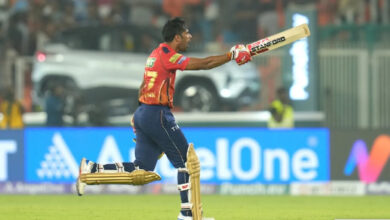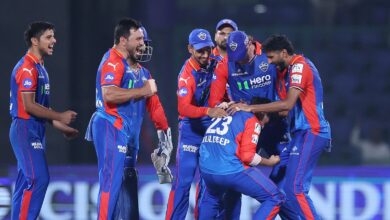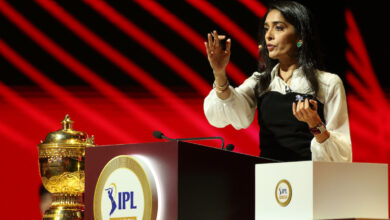How Team India of Rohit and Dravid are sleepwalking into the same old problems

Barring Rohit and Shubman Gill, the rest have been woeful. In the second WTC cycle, Kohli accumulated only 932 runs at an average of 32 in 30 innings; Pujara’s corresponding numbers are 928 at 32 in 32 games; Rahane’s 419 at 24 in 17 innings.From negligible acclimatization to an errant, confusing selection policy, from recurring makes to lack of fight, things went wrong quickly for India and only got worse as a disastrous match unfolded. It could be the epitaph of India’s defeat to Australia in the WTC final. It could also be the postscript of India’s defeat to New Zealand in the WTC final two years ago. This would rankle India the most—everything remained static in the two years between the two finals. It seemed like a rerun of an old movie, or a copycat with minor tweaks in the script, or a hastily cobbled-up sequel with the same arcs but different settings. The scorecards will tell you why the coincidences are no coincidences after all. As many as seven featured in both games; the top five is the same—and much as the wasting of new ball in the first day of the first session set the tone for the caving in, the ineptitude of the top-five in both innings was another stark reminder that it is time perhaps India looked beyond their old guards, that they would do well with a dose of freshness.
The top five in both innings of the Oval Test strolled into double figures before they somehow contrived to perish, owing more to their lack of application rather than the magic of the bowlers. Revisit the footage, and you would not find any entries to the top 50 balls of centuries. Even the Mitchell Starc rip-snorter to Virat Kohli does not sneak into the l. The ball from where he played seems unplayable. But he could have known better—this is his fifth tour to England—that Oval is the bounciest deck in England where the odd ball would rear up. The habit of committing to the front-foot invites danger. A master batsman with the wisdom of 183 Test innings and the weight of 28 hundreds should have known better. The second-innings shot as Sunil Gavaskar would say was a “bad shot”.
The Oval, London, Britain – June 11, 2023 Australia’s Steve Smith takes a catch to dismiss India’s Virat Kohli off the bowling of Scott Boland Action Images via Reuters
The short ball would spook him. So in the second innings, to manufacture that extra split second when reacting to short balls, he stood further back, nearly six centimeters behind where he was standing in the first dig. He would move the foot back in the trigger movement before the front-foot strides out, implying that his front-foot stride is as pronounced as it was before. The method was rational, but the execution was not. From a deeper set-up, the drive is not a judicious choice unless the ball is really full. But he did not res the temptation to drive the well-outside off ball when Scott Boland hurled it slightly fuller, but not quite drivable.
It’s a familiar mode of dismissal. Every batsman has flaws, technical and mental. The great ones iron it out for runs, glory and longevity. But Kohli’s tragic flaw outside the off-stump remains. His cover-drive is a thing of beauty, and you could counter-argue that he gets out in this fashion because it is his percentage shot. But Kohli could have weighed the circumstances and deciphered the plans. On the defining day of the morning session, prudence could have been his guiding light. The plan of Boland and Pat Cummins was clear as the bright sunlight blazing down the Oval. The cover-drive could be his favourite stroke, a productive one too. but he has a bagful of other strokes to lean onto.
The former captain was not alone at being injudicious. Rohit Sharma departed softly in both innings. Both times he looked in prine touch, before lethargy kicked in. He missed a straight one of Pat Cummins in the first, playing around his front pad. He missed a sweep of Nathan Lyon in the second. An assertive player of spin he could be, but Lyon has nailed him nine times in 21 innings, and thrice to sweeps.
There could have been some sympathy if they genuinely struggled with the conditions and bowling. But all of them looked un-hassled until the ball that ripped them out. Cheteshwar Pujara floundered in two extreme fashions. He left the ball he should not have and played at the ball he should have left. Even Ajinkya Rahane, their most productive batsman, was not error-proof—he swish-punched a hard length ball in the first after surviving lbw off a no-ball and a dropped catch. And he drove on the rise in the second. Both times he was set, and he could have taken the game deeper. Such makes are forgivable in a long series, but not in a one-off duel. It seems the fundamental flaw of Indian teams in the post-MS Dhoni era, they slip-up in the must-win knockouts. Twice now in the WTC finals, and twice in the T20 semifinals. Winning a knockout match of significance is a knack India have forgotten long ago.
Australia v India – The Oval, London, Britain – June 11, 2023 India’s Ajinkya Rahane walks after losing his wicket Action Images via Reuters/Paul Childs
The fallibility of the batsmen is not an aberration. Batting has been less than the sum of its parts for too long. Barring Sharma and Shubman Gill, the rest have been woeful. In the second WTC cycle, Kohli accumulated only 932 runs at an average of 32 in 30 innings; Pujara’s corresponding numbers are 928 at 32 in 32 games; Rahane’s 419 at 24 in 17 innings. Between them they have managed just two hundreds. Does the nucleus need to be disassembled for the next cycle? It depends on India’s ambitions in this format. Their priorities too. Like for instance, going to the final without a proper warm-up, straight from the rigorous IPL.
More often than not, the bowlers glossed over the wedges at the top, besides Rishabh Pant and the spin-all-round trio. But with Bumrah injured, the bowling too fell apart. As a once-in-a-generation bowler as Bumrah is, a great team doesn’t depend on just one bowler. Australia at their globe-sweeping heyday won rubbers without Shane Warne and Glenn McGrath. More unfathomable was how the depth of Indian bowling suddenly vanished. Where have the likes of Navdeep Saini, Kamlesh Nagarkoti and Ishan Porel vanished? Why was Umran Malik and Arshdeep Singh not groomed into this format? Why should India still depend on a 36-year-old Umesh Yadav or Jaydev Unadkat who has featured in two Tests in 13 years.
The management should shoulder some blame for the stasis Indian cricket finds itself in. When Rahul Dravid took over, it was assumed that he would take the country’s performances to the next rung, improve on the commendable work of Ravi Shastri and Co. Instead, they have digressed, have lost its identity and fight. The body language was appalling for most part of the Test; as was the decision to leave Ravichandran Ashwin out. It’s the inverse logic of what transpired at Southampton the year before. India was one seamer short there, here they played one too many. If the logic had been picking your five best bowlers, Ashwin should have been an automatic choice, more so in the absence of Bumrah. But the gift of logical thinking seems to desert the team in knockouts of ICC games. In the much-promised Dravid-era, India have lost four of their fives games abroad. The memories of Brisbane seem dant, like a dream.
The harsh reality is that India is a broken team. It needs to be fixed, lest these same makes would recur, in an endless vicious cycle.







